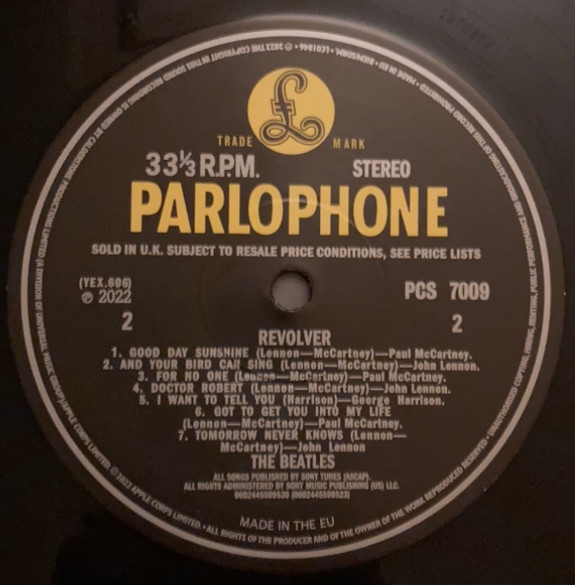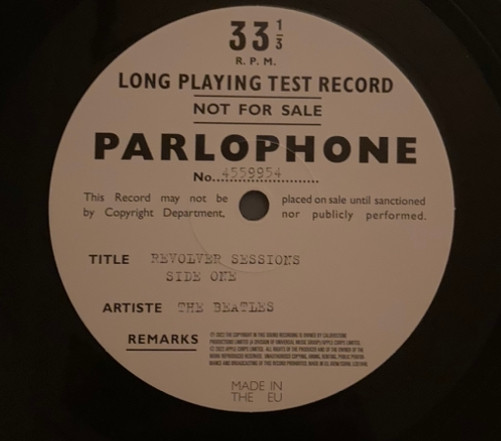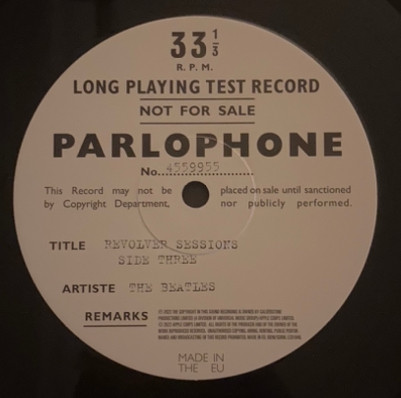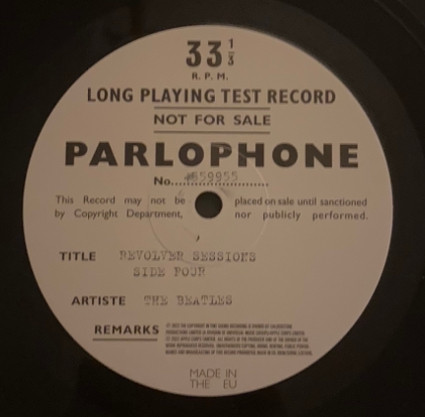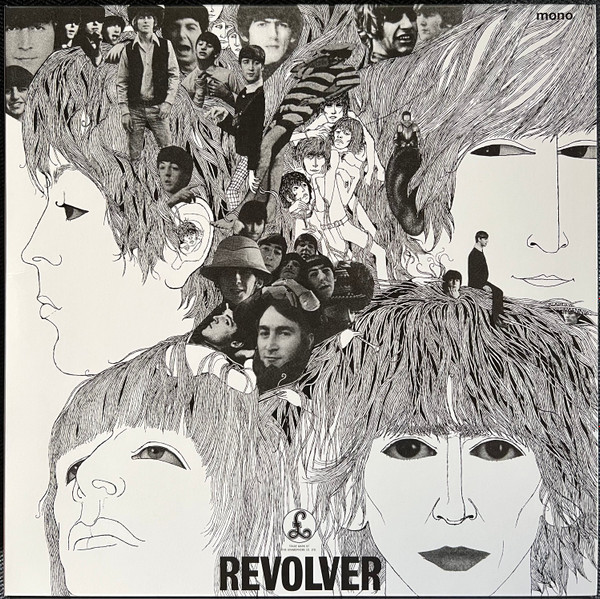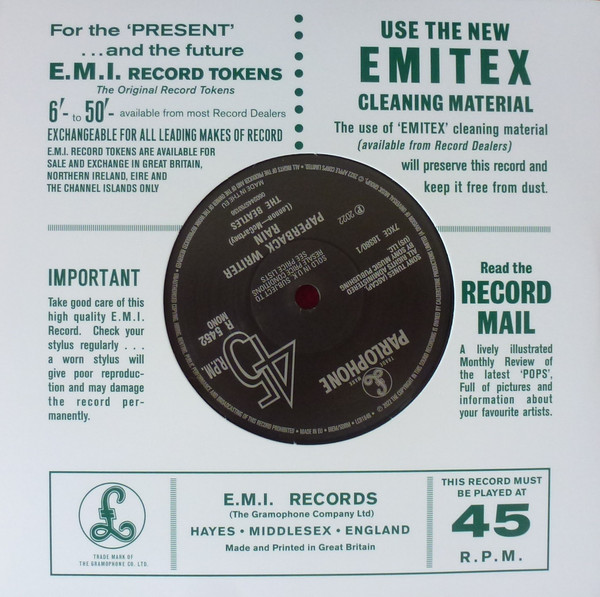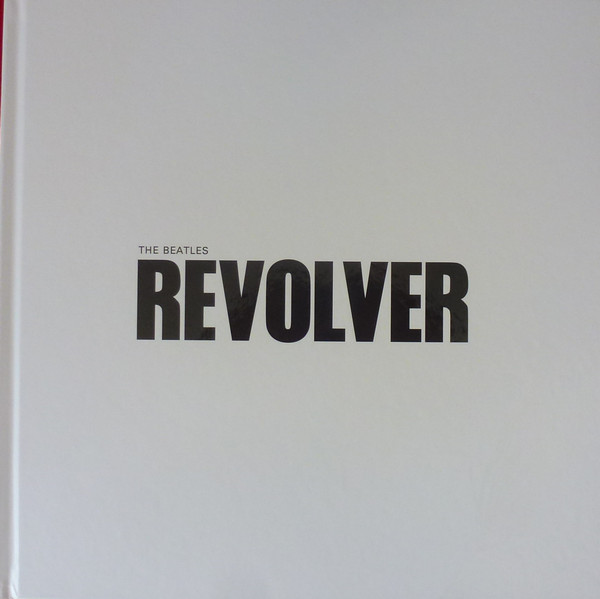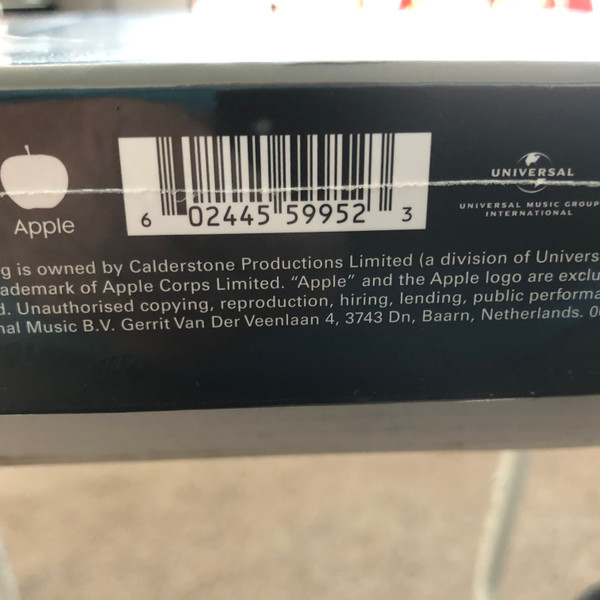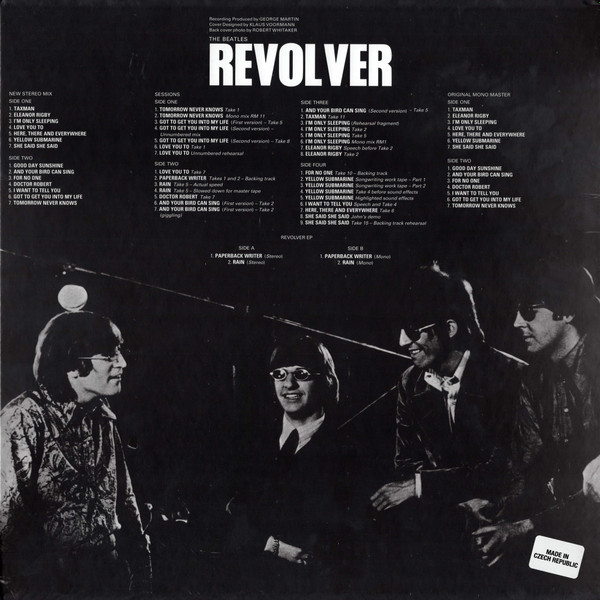
Revolver is the seventh studio album by the English rock band the Beatles. It was released on 5 August 1966, accompanied by the double A-side single “Eleanor Rigby” / “Yellow Submarine”. The album was the Beatles’ final recording project before their retirement as live performers and marked the group’s most overt use of studio technology to date, building on the advances of their late 1965 release Rubber Soul. It has since become regarded as one of the greatest and most innovative albums in the history of popular music, with recognition centred on its range of musical styles, diverse sounds and lyrical content. The Beatles recorded Revolver after taking a three-month break at the start of 1966, and during a period when London was feted as the era’s cultural capital. Regarded by some commentators as the start of the group’s psychedelic period, the songs reflect their interest in the drug LSD, Eastern philosophy and the avant-garde while addressing themes such as death and transcendence of material concerns. With no plans to reproduce their new material in concert, the band made liberal use of automatic double tracking, varispeed, reversed tapes, close audio miking, and instruments outside of their standard live set-up. Among its tracks are “Tomorrow Never Knows”, incorporating heavy Indian drone and a collage of tape loops; “Eleanor Rigby”, a song about loneliness featuring a string octet as its only musical backing; and “Love You To”, a foray into Hindustani classical music. The sessions also produced a non-album single, “Paperback Writer”, backed with “Rain”. In the United Kingdom, the album’s 14 tracks were gradually distributed to radio stations in the weeks before its release. In North America, Revolver was reduced to 11 songs by Capitol Records, with the omitted three appearing on the June 1966 LP Yesterday and Today. The release there coincided with the Beatles’ final concert tour and the controversy surrounding John Lennon’s remark that the band had become “more popular than Jesus”. The album topped the Record Retailer chart in the UK for seven weeks and the US Billboard Top LPs list for six weeks. Critical reaction was highly favourable in the UK but less so in the US amid the press’s unease at the band’s outspokenness on contemporary issues. Revolver expanded the boundaries of pop music, revolutionised standard practices in studio recording, advanced principles espoused by the 1960s counterculture, and inspired the development of psychedelic rock, electronica, progressive rock and world music. The album cover, designed by Klaus Voormann, combined Aubrey Beardsley-inspired line drawing with photo collage and won the 1967 Grammy Award for Best Album Cover, Graphic Arts. Aided by the 1987 international CD release, which standardised its content to the original Parlophone version, Revolver has surpassed Sgt. Pepper’s Lonely Hearts Club Band (1967) in many critics’ estimation as the Beatles’ best album. It was ranked first in the 1998 and 2000 editions of Colin Larkin’s book All Time Top 1000 Albums and third in the 2003 and 2012 editions of Rolling Stone magazine’s list of the “500 Greatest Albums of All Time”. It has been certified double platinum by the British Phonographic Industry (BPI) and 5× platinum by the Recording Industry Association of America (RIAA). A remixed and expanded edition of the album was released in 2022.
Tracklisting
| Position | Title |
|---|---|
| New Stereo Mix | |
| A1 | Taxman |
| A2 | Eleanor Rigby |
| A3 | I’m Only Sleeping |
| A4 | Love You To |
| A5 | Here, There And Everywhere |
| A6 | Yellow Submarine |
| A7 | She Said She Said |
| B1 | Good Day Sunshine |
| B2 | And Your Bird Can Sing |
| B3 | For No One |
| B4 | Doctor Robert |
| B5 | I Want To Tell You |
| B6 | Got To Get You Into My Life |
| B7 | Tomorrow Never Knows |
| Revolver Sessions | |
| C1 | Tomorrow Never Knows (Take 1) |
| C2 | Tomorrow Never Knows (Mono Mix RM 11) |
| C3 | Got To Get You Into My Life (First Version - Take 5) |
| C4 | Got To Get You Into My Life (Second Version Unnumbered Mix) |
| C5 | Got To Get You Into My Life (Second Version - Take 8) |
| C6 | Love You To (Take 1) |
| C7 | Love You To (Unnumbered Rehearsal) |
| D1 | Love You To (Take 7) |
| D2 | Paperback Writer (Takes 1 And 2 - Backing Track) |
| D3 | Rain (Take 5 - Actual Speed) |
| D4 | Rain (Take 5 - Slowed Down For Master Tape) |
| D5 | Doctor Robert (Take 7) |
| D6 | And Your Bird Can Sing (First Version - Take 2) |
| D7 | And Your Bird Can Sing (First Version - Take 2) (Giggling) |
| E1 | And Your Bird Can Sing (Second Version - Take 5) |
| E2 | Taxman (Take 1) |
| E3 | I’m Only Sleeping (Rehearsal Fragment) |
| E4 | I’m Only Sleeping (Take 2) |
| E5 | I’m Only Sleeping (Take 5) |
| E6 | I’m Only Sleeping (Mono Mix RM1) |
| E7 | Eleanor Rigby (Speech Before Take 2) |
| E8 | Eleanor Rigby (Take 2) |
| F1 | For No One Take (10 Backing Track) |
| F2 | Yellow Submarine (Songwriting Work Tape Part 1) |
| F3 | Yellow Submarine (Songwriting Work Tape Part 2) |
| F4 | Yellow Submarine (Take 4 Before Sound Effects) |
| F5 | Yellow Submarine (Highlighted Sound Effects) |
| F6 | I Want To Tell You (Speech And Take 4) |
| F7 | Here, There And Everywhere (Take 6) |
| F8 | She Said She Said (John’s Demo) |
| F9 | She Said She Said (Take 15 - Backing Track Rehearsal) |
| Original Mono Master | |
| G1 | Taxman |
| G2 | Eleanor Rigby |
| G3 | I’m Only Sleeping |
| G4 | Love You To |
| G5 | Here, There And Everywhere |
| G6 | Yellow Submarine |
| G7 | She Said She Said |
| H1 | Good Day Sunshine |
| H2 | And Your Bird Can Sing |
| H3 | For No One |
| H4 | Doctor Robert |
| H5 | I Want To Tell You |
| H6 | Got To Get You Into My Life |
| H7 | Tomorrow Never Knows |
| Revolver EP | |
| I1 | Paperback Writer (Stereo) |
| I2 | Rain (Stereo) |
| J1 | Paperback Writer (Mono) |
| J2 | Rain (Mono) |
Apple Music
Release Images
Release Information
| Key | Value |
|---|---|
| Wikipedia URL | https://en.wikipedia.org/wiki/Revolver_(Beatles_album) |
| Format | 1× Vinyl (180 Gram, Remixed) LP, Album, Reissue, Stereo |
| Label | Apple Records |
| Catalog Number | 0602445599523 |
| Notes | Comes in a slipcase box. The ‘New Stereo Mix’ and ‘Original Mono Mix’ are each housed in a separate jacket and the ‘Revolver Sessions’ in a gatefold jacket. Each of the 4 LPs have a plain white poly-lined inner sleeve. The EP is housed in a printed jacket without an inner sleeve. Includes a 100-page LP-sized hardbound book. Hype sticker on shrink-wrap front and ‘Made in Czech Republic’ on shrink-wrap back. First Catalog number appears on box bottom and each LP label. Second catalog number appears on the hype sticker. [From box bottom] ℗ 2022 The copyright in this sound recording is owned by Calderstone Productions Limited (a division of Universal Music Group)/Apple Corps Limited. © Apple Corps Limited [From hype sticker] Super deluxe 4 LP edition New stereo mix by Giles Martin and Sam Okell Two sessions LPs of outtakes, rehearsals, demos and studio chat Original 1966 mono LP 180 gram vinyl Plus 7" bonus EP with ‘Paperback Writer’ & ‘Rain’ in new stereo mixes & original 1966 mono 100-page hardback book with a Foreword by Paul McCartney, extensive historical and track-by-track information, rare photos and memorabilia. [From labels] ℗ 2022 {Missing from “Sessions” LPs} Made in the EU ℗ 2022 The copyright in this sound recording is owned by Calderstone Productions Limited (a division of Universal Music Group)/Apple Corps Limited. © Apple Corps Limited. [From booklet pg 99] © Apple Corps Limited […] All songs published by Sony Tunes (ASCAP). All rights administered by Sony Music Publishing (US) LLC. All runouts are stamped besides “MILES. ABBEY ROAD 1/2 SPEED. ROOM30” which is etched and only appears on sides A and B. |
| Discogs URL | The Beatles - Revolver |





